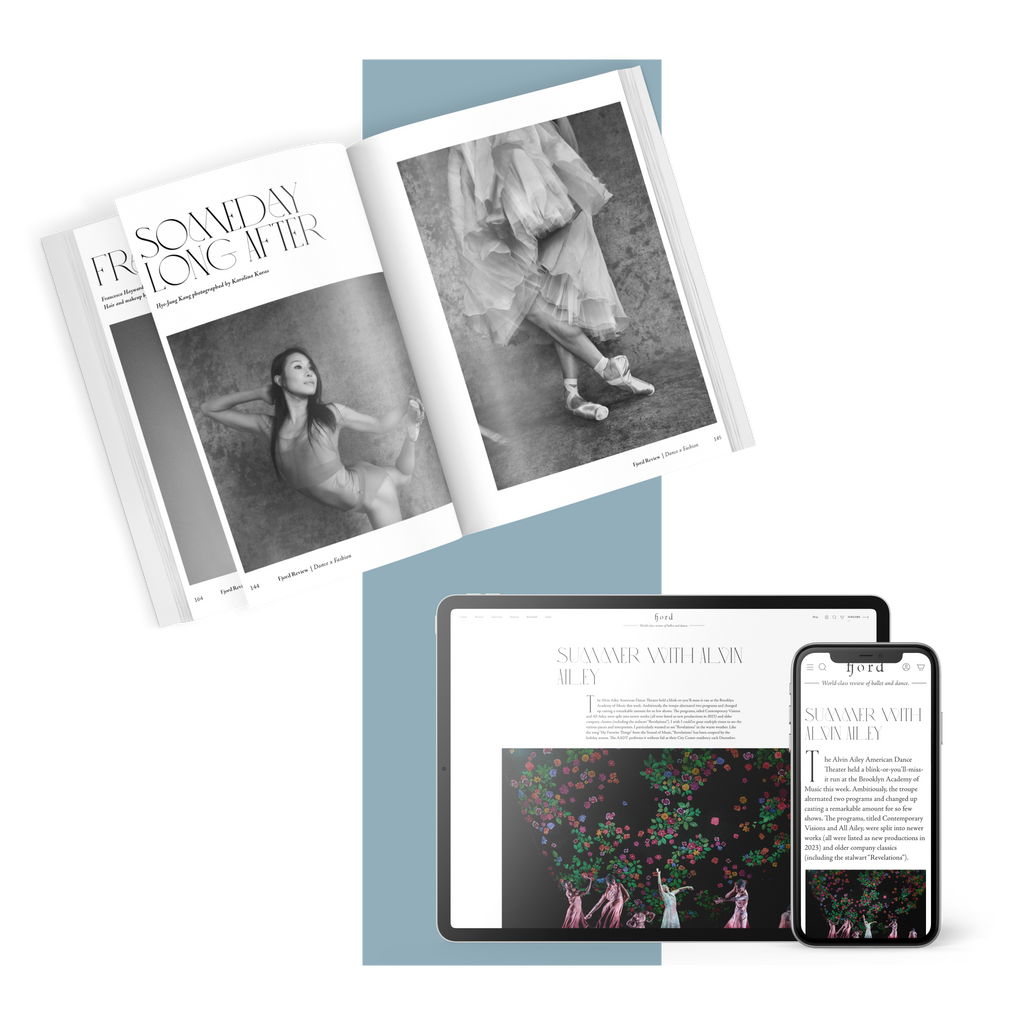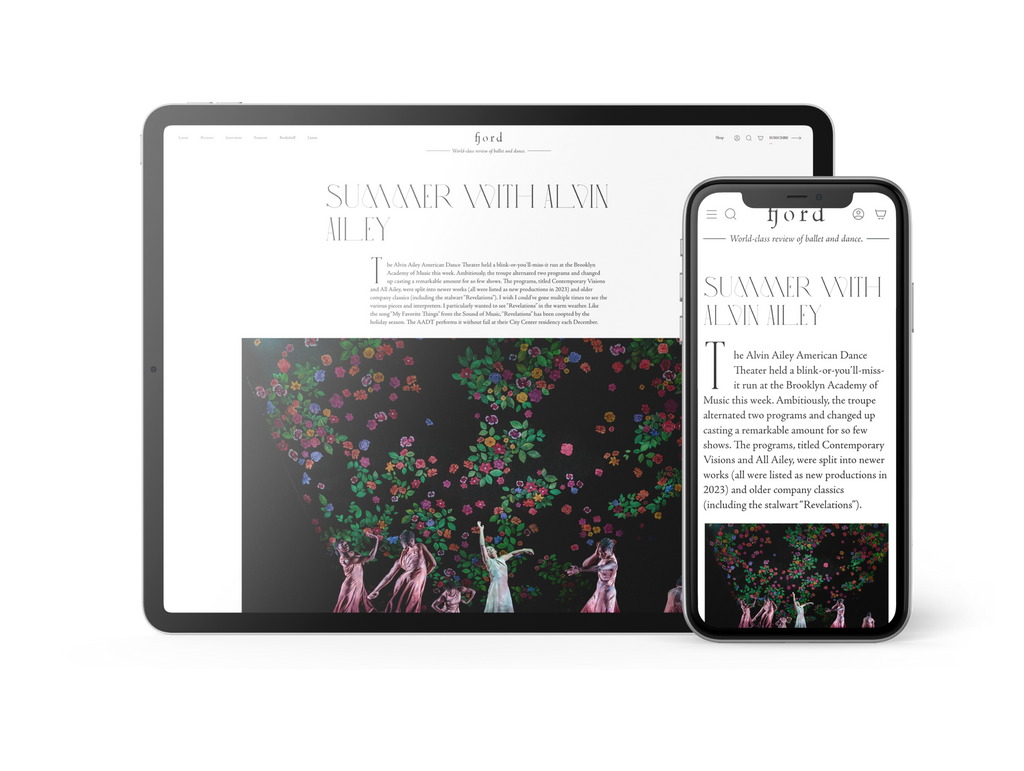Stanton Welch’s new production of “La Bayadère,” a glittering tale of betrayal and unrequited love, is akin to finding one’s self within an Indian miniature painting. Swirling shades of burnt coral, gold, dusty pink, turquoise, and an olive green tinged with yellow guide us down the Orientalist path to mythic India in a romanticised period. The magician’s optical illusion in play, nature is contrived by hand and presented as an ordered frame to a stage. The trompe l’oeil effect in motion to both trick the eye and delight sees a Rajah’s palace appear before the eyes. And just as an Indian miniature seeks to emphasize mood (or bhava) through rich lyricism, when coupled with the melodies of Minkus in response to the exotic theme, “La Bayadère” brings to life a daydream of the past through an explosion of dance.
To understand the landscape one needs to remember that “La Bayadère,” originally choreographed by Marius Petipa for the Russian Imperial Ballet, was first performed in 1877. As Welch explains of the ballet, “during this time, the Middle East in particular and all of Asia was really this mysterious, fantastic place for the West. You have to view it as a Russian concept of that place, it’s not in any way meant to be authentic to the country, it’s authentic to a Russian’s version or dream of what that country may be.”[note]Amanda Dunn, “Dance of death: Australian Ballet's Stanton Welch prepares for La Bayadere,” Sydney Morning Herald, August 15, 2014[/note] But in order to attain secure footing in this fantasy-scape of Bengal tigers, spice-hued costumes, and slippers that curl upward at the toe, one needs to surrender to the brilliant spectacle as it unfolds, teases, sparks, and entrances. It is impossible not to be a little awe-struck when the house lights come on. It is, in fact, a little like smoking opium with Solor, our warrior lead, at the behest of the fakir, Kalum.
The chance to be transported to a place where Gods’ leap, snakes slither, and saris swirl even in the ballet world does not come often enough. “In the twenty-first century “La Bayadère” is something of a mischievous survivor, a sparkling showcase of classical technique in a wash of unabashed exoticism.”[note]Dr Caitlyn Lehmann, “La Bayadère in Paris,” La Bayadère programme, (The Australian Ballet: Melbourne) 2014[/note] From the opening muted, jewel-like tones to the promised temptation of those twenty-four Shades in mesmerising procession in act III, this, for me, is a ballet of allurement. Wrapped up in a filmy veil, through a haze of opium smoke, the Kingdom of the Shades offers a glimpse of Heaven. Welch’s “La Bayadère,” created in 2010 for the Houston Ballet and now performed for the first time by the Australian Ballet, has the additional enticement of more for the male dancers in the sped-up, amplified plot. There is Agni, the Fire God, with legs that whip as fast on stage as if actually licked by flames, and performed with such conviction and spark by Chengwu Guo. And there is Cristiano Martino’s blue-painted Dream God, Garuda, who ensures our safe passage to Elysian bliss, and whom, as such, we cannot help but be grateful to.
This may be a work which features at its heart the Kingdom of Shades in slow, controlled and beautiful decent, but it also has plenty of crack, pop, and fire. With its simmering desire and vengeful deeds, this ballet is a little like being asked to hold a fire-cracker. The Gods amongst the mortals shimmer gold, silver, red, and blue, and they are as statuesque as they are magnificent. They provide Solor with the chance to reunite with his beloved temple dancer, Nikiya. They are the brilliant foil to the quiet trance of the Shades. Where the Shades seep under the skin, the Gods burst through, and it is the contrast between these two states that ensures allurement. A juxtaposition of loud with quiet, high drama with romanticism, bright colour with luminous white: all of these elements are held in perfect balance, much like the Shades themselves. “The procession of the Shades down the mountain, inspired by Gustave Doré’s illustrations of Dante’s Paradisio, is a hypnotic repetition of low arabesques and sweeping port de bras, a rigorous test of the corps de ballet’s stability and precision.”[note]Rose Mulready, “Elysian bliss: The Kingdom of the Shades,” The Australian Ballet’s blog, “Behind Ballet,” August 20, 2014[/note] Against a darkened backdrop, this white and poetic orchestration alters time and holds me transfixed. It is haunting, this hereafter. It is the much-needed change of pace and feel that holds the whole ballet together. The twenty-four Shades and the three Shades soloists perform the near impossible with the required ethereal grace, their tutus reminiscent of flower petals gently bobbing. Both Madeleine Eastoe and Daniel Gaudiello (Saturday night’s performance), and Elisa Badenes and Daniel Camargo’s (guest artists from Stuttgart Ballet for Tuesday night’s performance) final pas de deux as the entranced lovers bound to one another in the serenity of Paradise, is beauty made manifest.
Throughout the ballet, if I brush aside the film of fabric from my eyes, the challenge the grueling choreography presents can be seen, but as this plays as something of a dream, I decide to leave this in the background. I momentarily note that this is a work in which impossibly toned abdomens are on display in costumes courtesy of the Houston Ballet. I consider the extraordinary control of the Shades who have to rely on their inner-ear balance over their visual system as they make their dark descent. I even marvel at the magnetised viper that seals Nikiya’s fate and relegates her to Paradise. But for the main, for not lion’s share, but Bengal tiger’s portion, I elect to be swept up in magical spectacle. I ignore the “blood, sweat, and tears” that go into the making of any great work, and allow myself to forget about the world around me. For a couple of hours, inside the safe confines of a State Theatre like an opium den, I choose to let the narcoleptic haze envelop me.









comments